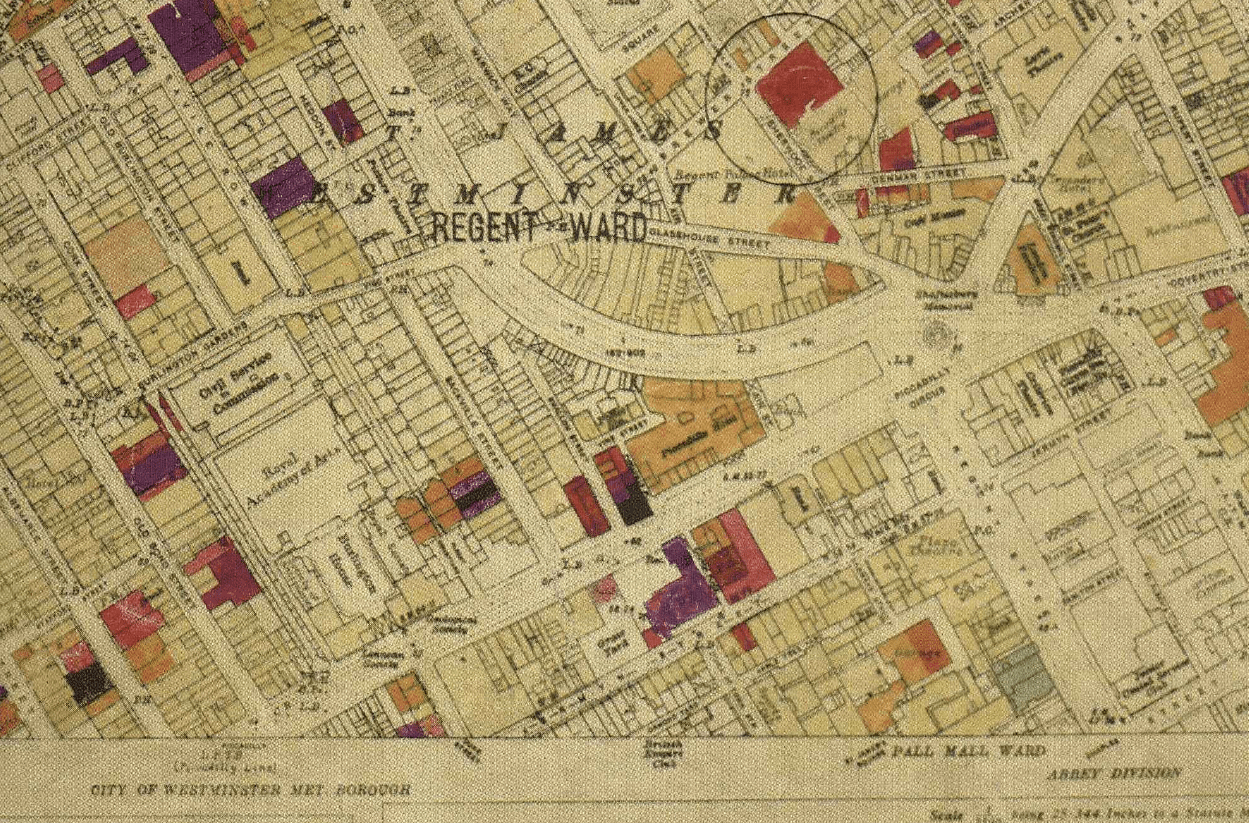Intrusive UXO survey in Piccadilly encounters an unusual problem
Igne was called to conduct an intrusive unexploded ordnance (UXO) survey in Piccadilly... but the job wasn't as simple as it first seemed.
20,000 bombs were dropped during the aerial bombardment of London, not all of them detonated; they pose a threat to life to this day.
Understanding the legacy of the aerial bombardment in Piccadilly, London
In 1940, Piccadilly was hit by high explosive and incendiary bombs during the first phase of the London Blitz. The damage that continued to be wreaked over the coming months was absolutely catastrophic.
The entire area needed to be reconstructed - and rapidly.
Commenting about the aftermath of the Blitz, Peter Larkham, professor of planning at Birmingham School of the Built Environment said: “Everybody called it an opportunity. That’s a difficult word if you suffered from bombing, were made homeless and saw people killed, but it was an opportunity for many.”
The planning and design of many buildings developed as part of this 'opportunity' post-WWII weren't focused on flexible long-term needs however. As a result, in many cases, much of the construction from the immediate aftermath of the war has been torn down to be rebuilt again.
So, the bomb sites of the 1940s can be construction sites to this day. And some of them still harbour hidden volatile explosive remnants of war.
Mitigating the threat of unexploded ordnance for construction clients
Knowing this, one developer reconstructing a site in Piccadilly recently called Igne to ensure his personnel were safe from the threat of unexploded ordnance.
He gave Igne's research team his site's exact location - directly behind the famous Piccadilly Circus Lights - and an intrusive UXO survey was subsequently recommended because of the threat level in that exact location...
Igne was finally able to access the site on a Friday ready to mobilise on the Monday...nothing unusual about that, but as is standard, a site visit was quickly arranged so Igne's experts could ensure the correct kit and personnel were deployed.
When Technical Field Manager, Nigel Barton, got to the site however, he didn't find what he was expecting to find.
Rather than level the building and start again, the plan was to leave the shell of the building intact meaning working from within...
The intrusive survey needed to be conducted in the basement of the building - but there was no way in for an intrusive survey rig, and the basement ceiling wasn't high enough for the elevation of a normal rig's mast.
To add to the problems, there are a series of power sources to Piccadilly Circus Lights - if any are disrupted and there is an outage, the cost is reported to be £2,000 a minute!
Problem solving; an Igne specialty!
Over the weekend Nigel and Igne drilling expert Micky worked with the contractor to solve the significant issue.
A path was carved through the centre of the building - cranes were ordered - the rig's mast was shortened.
Moving extra cautiously to prevent damage to the Piccadilly Circus Lights' power supplies, the rig and all required equipment was lifted in and the intrusive UXO survey could be done.
The client's timeline was met, the threat was mitigated, profits were protected - and most importantly, site personnel were cleared to begin work in safety.
Other articles of interest

Igne launch
Igne launch sees transformative merger of six leading companies to reshape pre-construction services in the infrastructure, energy and water sectors.

Cone penetration testing with Connor’s Rig
One of the reasons behind the UK land team’s decision to invest in Connor's Rig from Geomil earlier this year was to advance Igne's (formerly SafeLane) cone penetration testing (CPT) capability...


